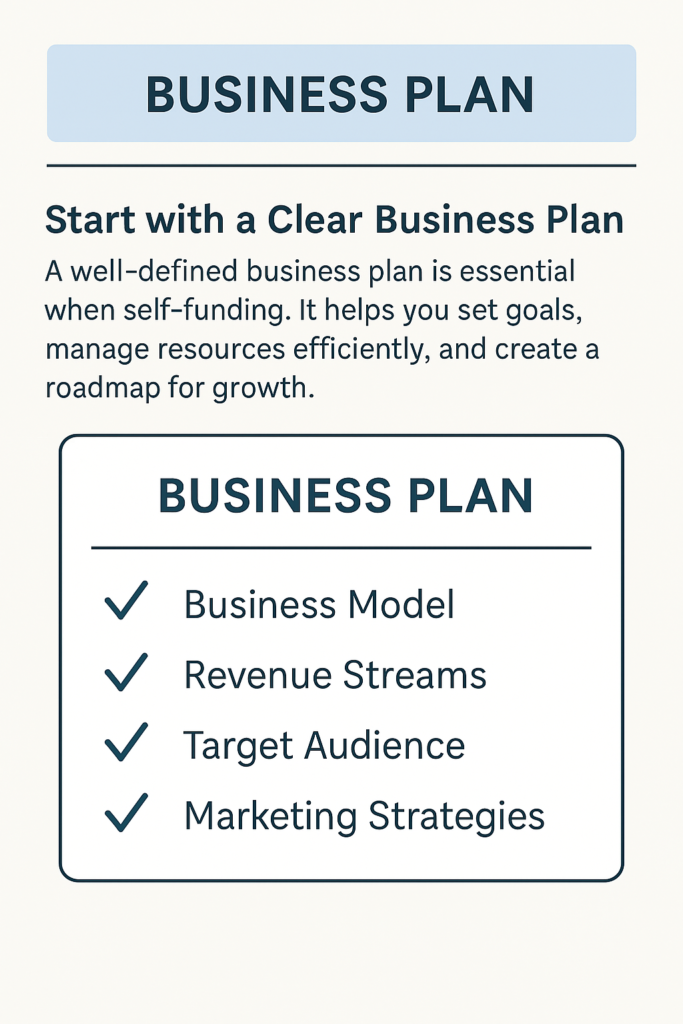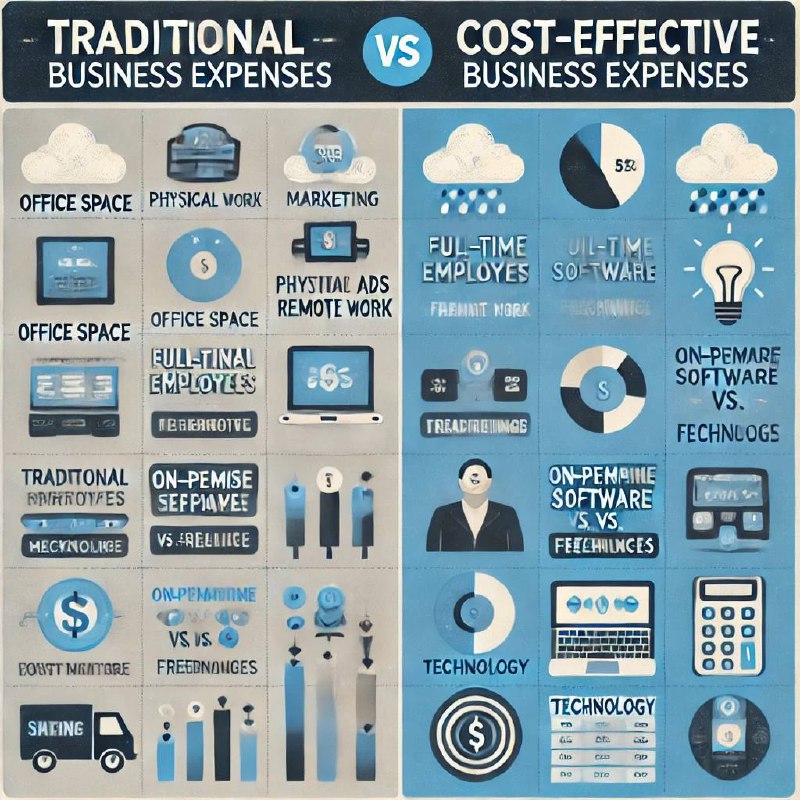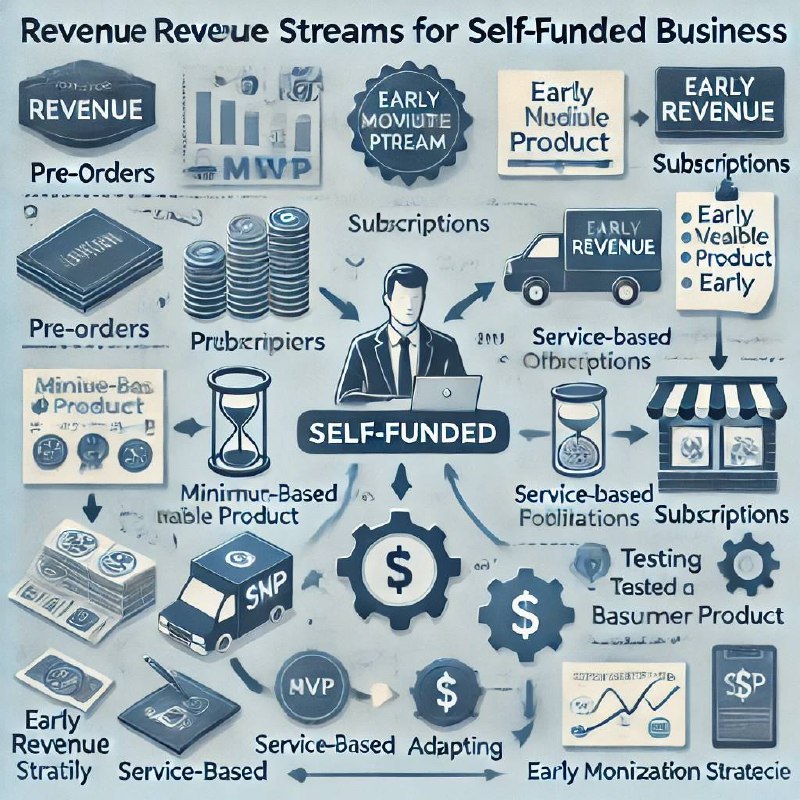self-funded business tips
Introduction
Starting a business without outside funding can be challenging, but with the right self-funded business tips, you can build a successful venture while maintaining full ownership. Bootstrapping requires strategic planning, financial discipline, and a focus on generating revenue quickly. In this guide, we’ll explore practical strategies to help you launch, grow, and sustain your business without relying on investors or loans.
Start with a Clear Business Plan
A well-defined business plan is essential when self-funding. It helps you set goals, manage resources efficiently, and create a roadmap for growth. Outline your business model, revenue streams, target audience, and marketing strategies to stay on track.
Key Components of a Strong Business Plan:
- Business Model: Define how your business will generate revenue.
- Target Audience: Identify your ideal customers and their pain points.
- Marketing Strategy: Plan how to reach your audience cost-effectively.
- Financial Plan: Forecast expenses, expected revenue, and break-even points.
A well-structured business plan not only keeps you focused but also helps you make informed decisions.

Keep Your Overhead Low
One of the most important self-funded business tips is to control expenses. Keeping your overhead low allows you to sustain operations without relying on external funding. Start by evaluating all potential costs and eliminating unnecessary expenses.
Ways to Reduce Overhead Costs:
- Work from Home or Co-Working Spaces: Avoid high office rental fees by working remotely or using affordable shared spaces.
- Use Free or Low-Cost Software: Take advantage of tools like Google Workspace, Canva, and Trello to manage operations efficiently.
- Outsource Select Tasks: Instead of hiring full-time employees, consider outsourcing specific tasks to freelancers or using automation tools.
- Go Digital with Marketing: Instead of expensive advertising, leverage content marketing, social media, and email marketing to reach customers organically.
By keeping costs low, you can stretch your budget further and focus on growing your business sustainably.
Suggested Image: A comparison chart of traditional vs. cost-effective business expenses.

Prioritize Revenue Generation
One of the most critical self-funded business tips is to focus on generating revenue as early as possible. Without outside funding, your business needs to sustain itself through sales and cash flow.
Steps to Prioritize Revenue Generation:
- Launch with a Minimum Viable Product (MVP): Start with a simplified version of your product or service to test demand and receive customer feedback.
- Offer Pre-Sales or Subscriptions: Secure early revenue by offering pre-orders, membership programs, or subscriptions.
- Diversify Revenue Streams: Explore multiple ways to generate income, such as service add-ons, partnerships, or digital products.
- Focus on High-Impact Marketing: Invest in cost-effective marketing strategies like SEO, content marketing, and social media to drive organic sales.
- Prioritize Cash Flow Management: Keep track of incoming and outgoing cash to ensure stability and reinvest wisely.
By emphasizing revenue generation from the beginning, you build a financially sustainable business that can grow without external investment.
Suggested Image: A flowchart illustrating different revenue streams for self-funded businesses. Your primary focus should be generating revenue as early as possible. Test your product or service with a minimum viable product (MVP) and refine it based on customer feedback. Look for quick monetization opportunities, such as pre-orders, subscriptions, or service-based offerings.

Leverage Free and Low-Cost Tools
A major advantage for self-funded entrepreneurs is the availability of free and budget-friendly tools that streamline operations and improve efficiency. Utilizing these resources can save significant costs while keeping your business running smoothly.
Essential Free and Low-Cost Tools:
- Design & Branding: Canva, GIMP, and Adobe Express for graphics and marketing materials.
- Project Management: Trello, Asana, and ClickUp for organizing tasks and tracking progress.
- Communication & Collaboration: Google Workspace, Slack, and Zoom for team communication and document sharing.
- Accounting & Finance: Wave, Zoho Books, and FreshBooks for managing invoices, expenses, and budgeting.
- Marketing & SEO: Ubersuggest, AnswerThePublic, and Mailchimp for keyword research, content marketing, and email campaigns.
Leveraging these tools can help you optimize productivity and maintain lean operations, allowing you to allocate funds toward growth initiatives.
Network and Collaborate
One of the most overlooked self-funded business tips is the power of networking. When you bootstrap your business, relationships can be just as valuable as financial resources. Building a strong network can help you gain insights, find business opportunities, and even attract customers.
How to Build a Strong Business Network:
- Join Industry Groups & Online Communities: Engage in forums, LinkedIn groups, and local business organizations to connect with other entrepreneurs.
- Attend Networking Events & Conferences: Meet potential partners, mentors, and customers in your field.
- Seek Mentorship: Learning from experienced business owners can help you avoid common pitfalls and accelerate growth.
- Collaborate with Other Entrepreneurs: Partner with complementary businesses for joint marketing efforts, referrals, or co-branded projects.
By actively networking and collaborating, you can expand your reach, gain credibility, and uncover growth opportunities—all without external funding.
Reinvest Profits Wisely
One of the key self-funded business tips is to reinvest profits strategically as your business grows. Reinvesting wisely allows you to maintain cash flow, scale your operations, and focus on areas that directly contribute to long-term success.
How to Reinvest Profits Effectively:
- Invest in Marketing & Customer Acquisition: Reinvest your profits into marketing strategies that generate high returns, such as search engine optimization (SEO), content marketing, or paid ads that convert.
- Improve Your Product or Service: Focus on enhancing your offering to better meet customer needs. This could involve investing in product development, customer support, or quality improvements.
- Hire Key Team Members: As your business scales, reinvesting in hiring skilled employees or freelancers will allow you to focus on growth areas where you need expertise.
- Expand Your Revenue Streams: Use profits to explore new revenue opportunities, such as creating digital products, offering additional services, or entering new markets.
- Build Emergency & Growth Reserves: It’s also wise to set aside a portion of profits for unexpected expenses and future business opportunities.
By strategically reinvesting your profits, you can fuel growth, increase operational efficiency, and build a sustainable business without the need for external funding.
Maintain a Lean Mindset
Adopting a lean mindset is crucial when running a self-funded business. It involves staying resourceful, minimizing waste, and constantly looking for ways to operate more efficiently. By focusing on lean practices, you can avoid unnecessary expenses and direct your resources toward areas that drive growth.
Key Strategies for Maintaining a Lean Mindset:
- Evaluate Expenses Regularly: Review your spending on a regular basis to identify areas where you can cut costs without sacrificing quality or customer experience.
- Automate Processes: Use tools and software to automate repetitive tasks like invoicing, social media posting, and email marketing to save time and reduce labor costs.
- Outsource Select Tasks: Instead of hiring full-time employees for every function, outsource tasks like content creation, graphic design, or customer service to freelancers or agencies.
- Keep a Flexible Approach: Be open to adjusting your business model or pivoting if needed. Stay responsive to market demands and customer feedback.
- Prioritize Efficiency: Streamline operations and eliminate unnecessary steps in your workflows to save time and money.
By maintaining a lean mindset, you’ll make better financial decisions and ensure that your self-funded business can thrive even with limited resources.

Conclusion
Building a self-funded business takes dedication, creativity, and strategic planning. By following these self-funded business tips, you can create a solid foundation for growth without relying on external funding. From creating a detailed business plan to prioritizing revenue, managing expenses, and maintaining a lean mindset, every step helps you build a sustainable business that stands the test of time.
Remember, success in bootstrapping a business is not just about avoiding debt or outside investment—it’s about making smart decisions, staying focused on your goals, and reinvesting wisely to fuel long-term growth.
With persistence and careful planning, you can achieve your entrepreneurial dreams and maintain full control over your business.
Call to Action: Have you successfully launched a self-funded business? Share your top tips in the comments below!






